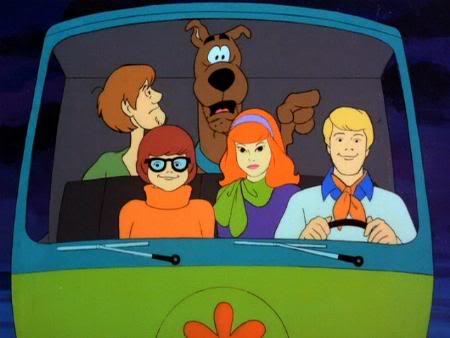I’m from the UK where in general there’s only a stop sign if it’s needed, such as a junction where you can see absolutely nothing on one side. Otherwise usually there’s a give way line instead, to let people slow the car right down to look, but not need to stop if it’s unnecessary.
Whenever I see a video of an American street, it seems like there’s a stop sign everywhere I’d expect there to be a give way line. Surely this is inefficient as stopping and starting increases emissions, and stops the flow of traffic.
Is it really just the American government doesn’t expect drivers to look properly? Is it so the police can give people tickets for not quite stopping but still doing the junction completely safely?
My guess was just flawed design (see also low-density housing, traffic/parking problems, and lack of public transportation) and yeah, searching on YT gives a NotJustBikes video on the topic. Although it doesn’t really have more specific to the USA than what I’ve said here.
Potentially car-centric design (because stop and go faster) is why they lean more heavily on it, especially with taller (and heavier) trucks/SUVs being more common.
Reading more of these comments it’s clear we need to invest heavily in biking and transit infrastructure so taking away some idiots drivers license doesn’t damn them to poverty
Biking infrastructure is only useful in big cities where your distance to work could be quite short (within 5 miles or so). The average American commute distance is 41 miles. It just doesn’t make sense to build out bike infrastructure very many places in the US.
Trains and changing the roads to make it easier for cars to drive themselves make a lot more sense.
The majority of trips taken in the US in cars is 3 miles or less, completely walkable/cycleable/public-transportation-able. I don’t think anyone would say no one should drive 41 miles in order to go to work, but it doesn’t mean regional and local infrastructure especially in urban areas shouldn’t aim towards these goals because that is where the bulk of ALL general vehicle traffic is.
These two things are not incompatible. In fact, it would benefit those who do drive because everyone doesn’t need to drive for many of their trips, and won’t because there are accessible and attractive alternatives.
The majority of trips taken in the US in cars is 3 miles or less
This statistic is true but incredibly misleading. Firstly, a huge chunk of those trips are trips to the supermarket or other shopping which is not something you’re going to do on a bike. You can only fit so many groceries in a bike trip… Even with a trailer. (Aside: I wonder if frozen foods would even make it safely all the way home in the South if you loaded up a bike with a trailer and had to travel 3 miles?)
The second reason why it’s misleading is that it includes trips after you’ve gone to work. So you commute to work: 41 miles. Actually, you stop at Starbucks on the way and that’s only two miles from your house so that counts as a single-destination car trip. Then for lunch you take a short trip from the office to a restaurant/fast food place. That’s a single-destination car trip.
You go out to dinner some nights at a restaurant 3 miles away. That’s a short trip that certainly could’ve been done on bike but are you really going to get the whole family on their bikes to show up at the restaurant all hot & sweaty for dinner? In the South you’d be so sweaty it’d be worthy of taking a shower and in the North you’d be trudging through snow, freezing your face off.
Then there’s the fact that the weather doesn’t matter when it comes to cars. Rain or snow is no issue: You’re still going to the supermarket but you would not make that same trip on a bike unless it was an emergency and you had no other option.
The reality is that while the majority of trips are 3 miles are less it’s also true that the majority of trips are not trips you’d want to make on a bike.
There’s another problem with that statistic: The majority of people in the US live in big cities! I wonder how much that statistic would change if you removed big cities/metro areas from the data. My guess: “<3 miles” would jump to “<10 miles”.
I live in Jacksonville, FL and we have two supermarkets that are ~5 miles away (in different directions) and we have bike lanes! Nobody uses them. It’s just too fucking hot! For about 9 months out of the year it’s >90°F with ~90% relative humidity (in the morning; late afternoon it can drop to a mere ~60% when it’s not summer! haha). The only time of the year it would be comfortable to do something like ride your bike to get something done (as opposed to just for exercise) is December through February. Any other time it’s just not realistic unless you plan (and have the time) to take a shower afterwards.
https://www.currentresults.com/Weather/Florida/humidity-annual.php
It also rains pretty much every single day in the afternoon during the summer and sometimes off/on all throughout the day. Rarely rains at all in winter though so that’s a plus I guess.
The problem with North America is that it is closed to trying new things because it believes that its way of doing things is better than the rest of the world.
For example, roundabouts could help with traffic flow and reduce accidents, as they have been proven to do in the rest of the world. But unfortunately, North American drivers are absolutely terrified of them, so cities will not implement them.
Seems like a bit of a broad brush to paint with my friend. Plenty of places are building roundabouts
Not really. A small number of places are building a few. Tens of thousands are needed. It’ll be a couple centuries at this rate.
The problem with North America is that it is closed to trying new things because it believes that its way of doing things is better than the rest of the world.
Speak for yourself there, mister. Miami put in a ton of roundabouts before I left 12 years ago, and I see now every time I go back. And the rural community I live in now just made a new one. We also have bigger rotaries. Maybe it’s not all of North America that’s afraid of trying something new? Maybe it’s just your town?
Some areas are implementing roundabouts, but I think one problem with them is they require more space than a square intersection.
I think telling someone in Europe that we don’t implement roundabouts in the US because of space considerations might seem ridiculous to them.
An issue I see locally is they can’t just paint a circle on the road with a couple signs. It always has to be a million dollar project widening out the curbs, building up a huge curb in the middle, putting a big goddamn planter in the middle, then sprinkle signs liberally until it’s unreadable.
Agreed, but they can commit to doing it via incremental progress. When they need to tear up an intersection for some other reason just make the change then. Eventually we’d all be a lot safer.
Of course, at least in Philadelphia, planning is not something that gets a lot of effort. The number of times over the years when I’ve seen crews resurface a road, then within a week or two some other crew is out ripping it all up to do some sort of work.
First, traffic circles are rare here, and grid patterns more common, so we have many more simple intersections of roughly equivalent roads. This likely set a precedent where the default choice was simply to avoid trying to determine who should give way, and just tell everyone to stop and then follow a set of rules that were dependent on the moment. Fuel economy would not have been a concern at all.
If it doesn’t actively cause problems, even a sub optimal standard can still settle in. Then, once cultural inertia takes over, it can literally be dangerous to try to change ingrained driving habits, and even if it’s not strictly dangerous, in a large country with vast swathes where virtually everyone drives, simplifying the decision tree is important for traffic flow.
For instance, this is not directly related to stop-vs-give-way, but it’s illustrative of how standards become sticky even when there’s s better way. There is a very busy at-grade intersection near where i live that became infamous. It has a combination of having multiple lanes on each road, speed limits nearing the top of what’s allowed on “normal” roads (ie not a freeway/motorway), large numbers of young drivers, and large numbers of wealthier drivers. It became known, hyperbolically, as “the most dangerous and expensive intersection in the world” because of the large number of accidents that involved expensive cars, and it was a nightmare to navigate. The insurance companies and the traffic planners wanted to try to fix it.
So they did all their studies and spent millions to turn it from as signal-controlled intersection to a “Michigan Left.” Drivers were confused and angry and the lack of understanding meant that people hated it. They were confused, so there were still a good number of accidents, many of them at higher speed since drivers who did understand the concept would not be ready for someone turning against traffic. Many people simply avoided it, clogging nearby routes in a way that more than mooted the advantages of the new layout.
In the end, the government left the new infrastructure as an option, but reopened the old turn lanes and set the signals back. An objectively better layout in ideal situations was an utter failure when actually imposed on the American driving public. Using more stop signs than we “need” is similar in that people expect a certain behavior and driving habits are built around it, and switching to the English system would probably create as many problems as it solves, while also being expensive for whichever generation would have considered it.
If there isn’t a sign people assume they have the right of way. That’s just how the roads work. I’ve even seen signs bellow the stop sign saying cross traffic does not stop. A “rolling stop” where you sort of look and slow down but don’t actually stop can easily get you a ticket.
People still ignore stop signs or red lights often resulting in accidents.
One explanation could be that many American cities are designed in a grid shape, making many 4 way crossings of equally important roads.
European roads are more often like a tree structure with one road being the main one and with more 3 way intersections, and where the smaller roads have to yield.
Obviously both continents have both types, but due to the city design, USA has many more 4 way crossings.
Just different design philosophy.
EU uses the signs as traffic calming. US uses to determine right of way. Studies have shown that there are better ways, but how do you retrain all the drivers? It would be a financial nightmare and the transition would likely result in more accidents, so, status quo
This might be a stupid answer, but I genuinely think Americans couldn’t handle that system. We already have problems with people not stopping properly at stop signs. If we had the “give way” system too many people would just ignore it and cause accidents.
I realize this is super pessimistic, but I think it’s true. We have a handful of roundabouts and people always screw them up.
I don’t think Americans are inherently dumber or anything, I just think our licensing exam is laughably easy. You literally just parallel park, then drive in a square where you encounter one traffic light, and one stop sign. Exam was over in 5 minutes. Here’s your license.
Well Yield signs are hot spots for accidents so Yeah Americans probably would not deal with them that well
Licensing is very different state to state apparently. My final driving test involved driving for an hour, and the parking section was more than just parallel parking (tho I feel like if you can parallel park you can do pretty much any type of parking).
I lived near a US roundabout for 10 years, and screeching tires were an almost daily occurrence. But, the few accidents that occur in roundabouts seem to be minor because of the low speeds and gentle angles involves.
In Germany we have right-before-left on unmarked junctions. I have the feeling that something like that just does not exist in the US? Oh and does it exist in the UK as left-before-right?
We have the same rule in the states but there are tons of drivers here that are idiots. If two cars pull up to the same intersection at the same time, the person in the biggest hurry will usually jump the gun and go first no matter what the law is. Thus, it is usually easier to just force one direction to stop while allowing the perpendicular street to continue without stopping. It also helps with assigning blame in the case of a collision.











